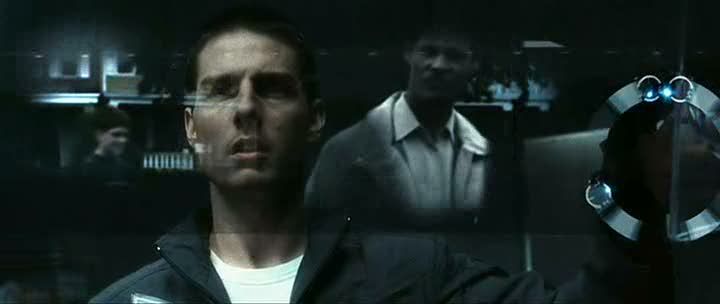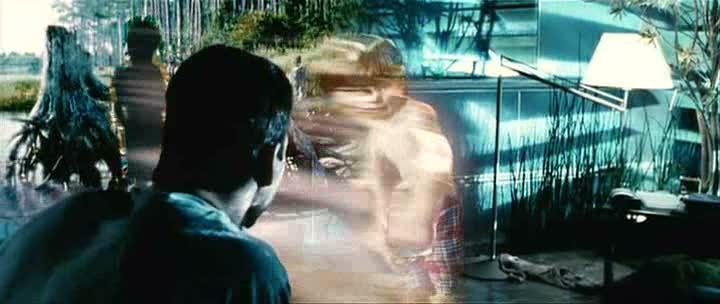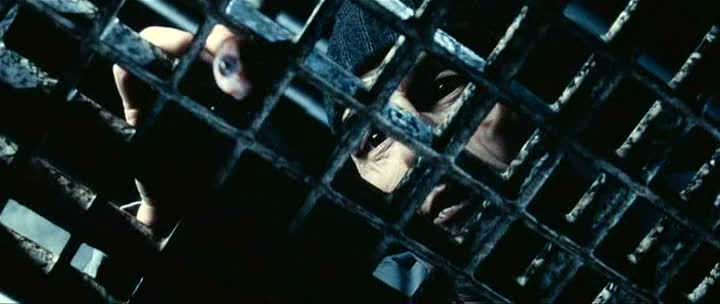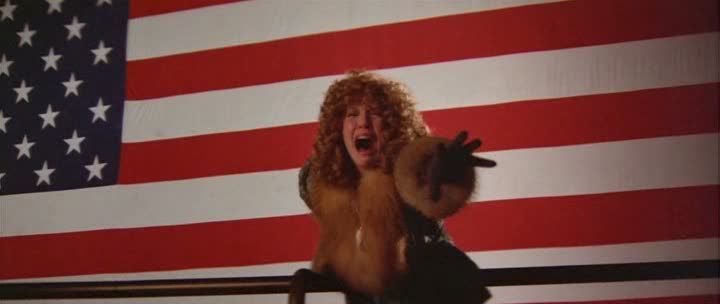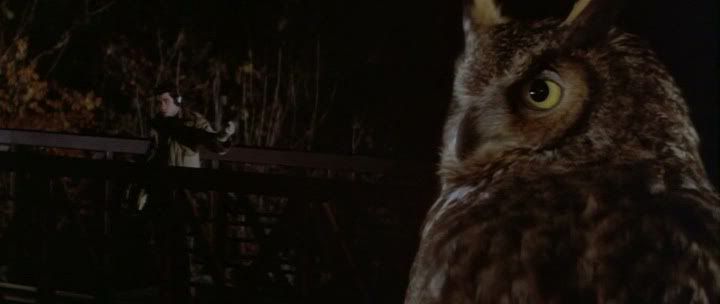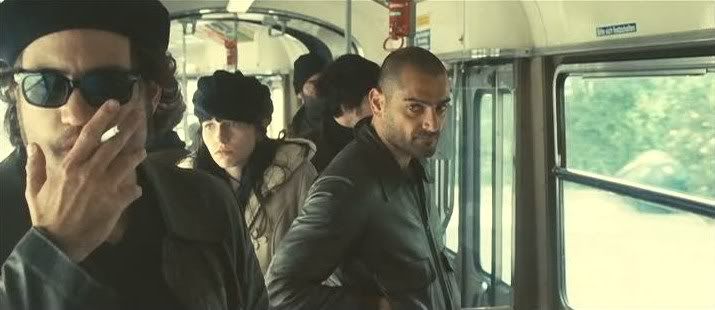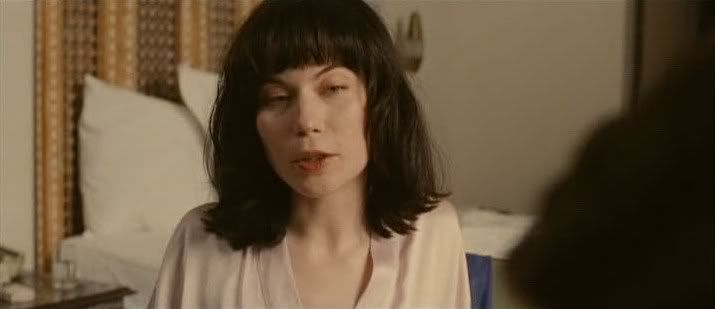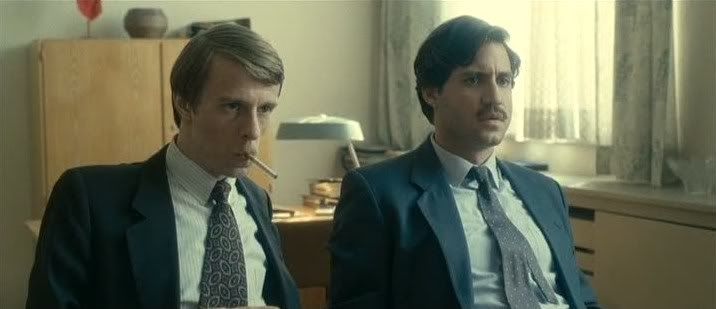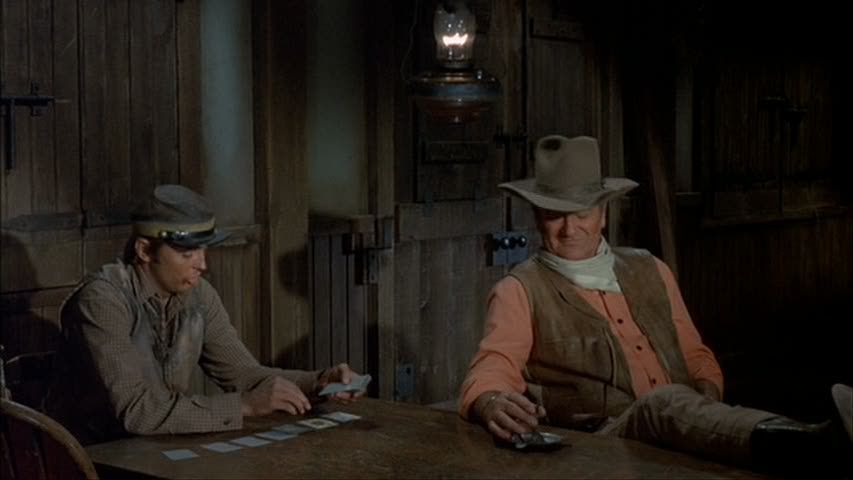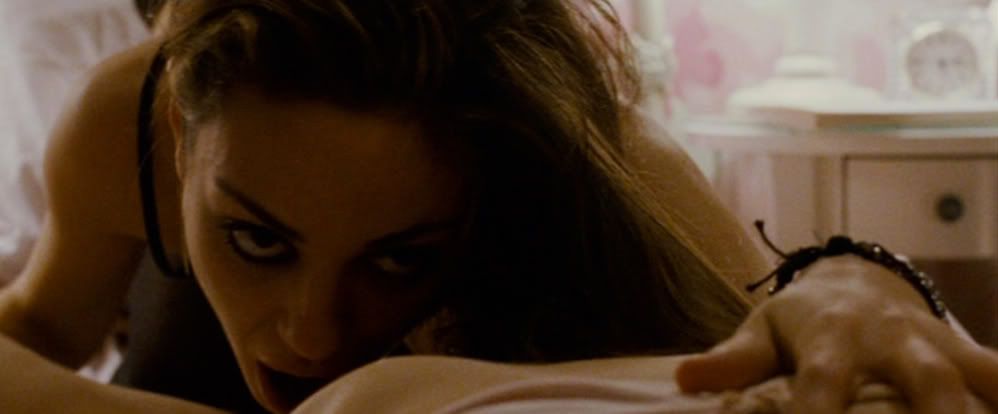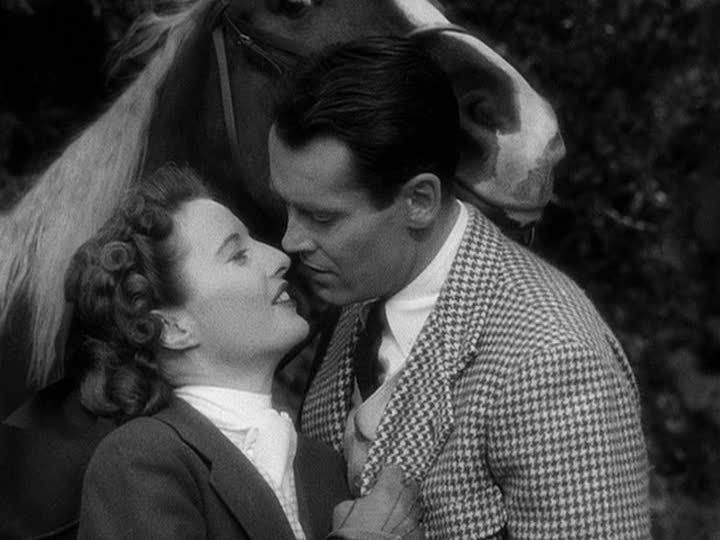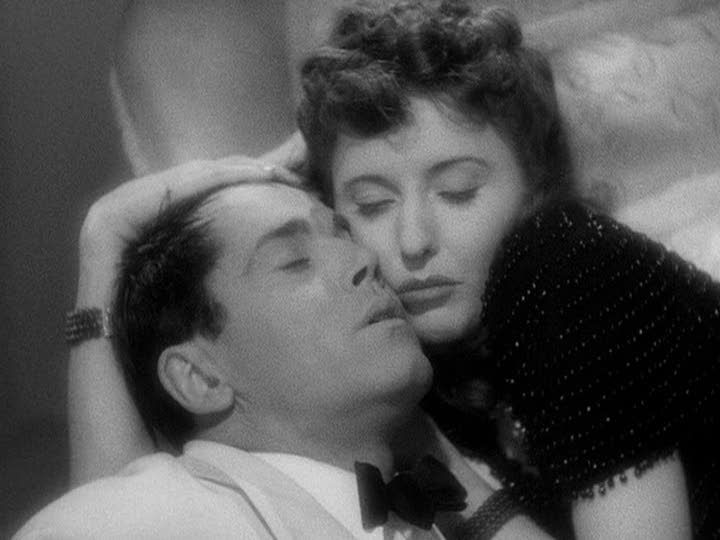
The Red Shoes is Michael Powell and Emeric Pressburger's film about a ballet company and its new star, Victoria Page (Moira Shearer), who is torn between her love of dancing and her love of the composer Julian Craster (Marius Goring). Victoria has always dreamed of being a great dancer, and with the famous ballet director Boris Lermontov (Anton Walbrook), she gets her chance, catching the notoriously picky Lermontov's attention and increasingly becoming the company's star performer. At the same time, Lermontov has hired the aspiring young composer Julian, and he too becomes a star within the company, composing original new music that impresses everyone who hears it. The only catch is that Lermontov has an obsession with dancers committing their entire lives to their art — he is furious when his previous star announces that she's getting married — and since it's inevitable that Victoria and Julian will eventually fall in love, their success seems very tenuous.
The film is about the ballet, of course, but more than that it's about the untenable position of women in a world that forces them to choose between ordinary domestic pleasures — love, marriage, family — and the ability to express themselves creatively or professionally. By the end of the film, Victoria is positioned between two men, Lermontov and Julian, neither of whom will allow her to build a balanced, happy life for herself. Both men demand that she choose one or the other. The final confrontation is structured like the showdown of a love triangle, the two men verbally dueling over the woman they both want, even though Lermontov has no sexual or romantic desire for Victoria; he wants only for her to dedicate herself entirely to dancing. In between them, Victoria can only cry, being asked to choose when it's obvious that she both loves Julian and loves dancing, and wouldn't want to give up either. (Though why she'd ever want Julian, who's made up like a wispy 30s Hollywood leading man and who's as much of an arrogant, unyielding jerk as Lermontov, is a question the film can never quite answer.) The film is positively progressive in its examination of Victoria's dilemma, even if it's only in tragic terms, with no way out for her, no solution to resolve these tensions tearing her apart.
But that's the nature of this film. It's an overwrought melodrama and it knows it — it revels in it, in fact. The performances, with the exception of Shearer's supple, subtle turn as Victoria, are uniformly over-the-top, both onstage and off. At one point, the choreographer Ljubov (Léonide Massine) dances around Lermontov while arguing with him, as though dancing a part in a ballet; a spotlight even follows Ljubov around as though he were still rehearsing. This scene, with its light comic undertones, suggests that these people live the ballet, that onstage and off they're prone to dramatics and overstatement, to grand gestures that could be seen way up in the last rows of the theater. They're always projecting, and so their histrionics work within the context of their characters. This is especially true of Lermontov, who despite his backstage role always seems to be acting, to be projecting the image of the demanding, tyrannical director that he believes he should inhabit. Walbrook's performance is such great fun because of this artificiality, this note of hysterical overacting that infuses everything Lermontov does. After he finally convinces Victoria to return to dancing towards the end of the film, when she leaves the room he shakes his arms around, clasping at the air, grandly declaring his excitement at his victory to the empty room.

Powell and Pressburger match the story's melodramatics with lush, patently artificial imagery that enhances the film's underlying themes: as is so often the case in their cinema, the film seems to take place in a surreal dreamworld of painted backdrops and lavish sets that stand in for such glamorous locales as Monte Carlo. Onstage and offstage are united in artificiality, suggesting that for these artists, under Lermontov's guidance, life and art are unified, with the latter overshadowing the former. Nowhere is this more apparent than during the sublime 15-minute sequence in which Victoria performs the ballet The Red Shoes for the first time. It is one of the finest sequences in the cinema, a beautiful and remarkably playful melding of the cinema and the theater, and an ode, not to the power of ballet but to the power of Powell and Pressburger's own chosen art.
Once the performance starts, Powell and Pressburger deliberately and playfully erase the boundaries and limitations of the theatrical stage, leaping into the realm of the cinema. When Victoria's character in the ballet sees the red shoes in a shop window, she imagines that she sees herself dancing in the window, turning pirouettes. It is an idea that's all but impossible to convey purely through dancing, on a stage: it is internal, a moment of imagination that can only be conveyed cinematically. So Powell and Pressburger superimpose an image of Victoria dancing in the window, as she stands outside, looking in and imagining this scene. Although the moment ostensibly occurs during a real theatrical performance of the ballet, before an audience, Powell and Pressburger instead stage the sequence with a cinematic sensibility that could never be translated to the stage in this way. When Victoria first dons the red shoes, she does so by leaping forward into them, and in a closeup on her feet, the shoes change, in an instant between frames, from her plain white ones to the bold red ones. It is, again, a moment that purposefully shatters the illusion of a ballet taking place on a stage — in a theatrical performance, the dancer would have to go backstage and change her shoes at this point, but Powell and Pressburger elide the costume change through the magic of editing.
Again and again, the filmmakers are calling attention to the differences between the cinema and live theater, using every cinematic trick at their disposal to transform this ballet into a fluid, magical sequence. Victoria turns and leaps across the stage — and the wooden boards of the floor keep reminding one that this is a stage — and dances in long straight lines that would be impossible to maintain on a real stage without dancing into the backstage area. Indeed, at one point, after a lengthy sequence in which Victoria dances through a succession of narrow corridors and between buildings, Powell and Pressburger cut back to a long shot of the entire stage, which reveals Victoria emerging from the rear of the stage, where she would have just been dancing for a long time completely unseen by a theater audience. Only the camera is able to follow her back there, its graceful tracking following the fluid lines of her movement. The subsequent sequence of Victoria being taken away by the power of the red shoes relies heavily on superimposition to lend a ghostly, translucent quality to the dancer as she hops and twirls through eerie nighttime vistas and, finally, enters a free fall that's familiar from cinematic dream sequences but would, again, break the constraints of reality on a real stage. Still later, she dances with a wisp of paper that transforms briefly into a man, her own costume changing between shots, before the man again fades away into a newspaper blowing in the breeze.
Towards the end of the performance, Powell and Pressburger finally insert a high shot looking out towards the audience beyond the row of lights at the front of the stage, the first time since the very beginning of the performance that the presence of the audience or the stage borders are revealed. But at this moment the audience is replaced by a superimposition of a churning sea, and the sound of the waves blends subtly with the sound of applause, suggesting that Victoria is seeing everything through her character and the story of the ballet, seeing everything around her transformed and made real through the magic of creative expression. It is a stirring, thrilling sequence, and one feels both Victoria's joy in the dance, and the joy of the filmmakers in shaping and directing her dance. That joy, both in front of the camera and behind it, is the joy of creativity and art, and even when this film is at its most tragic and heartrending, that joy is the feeling that comes through most strongly.

